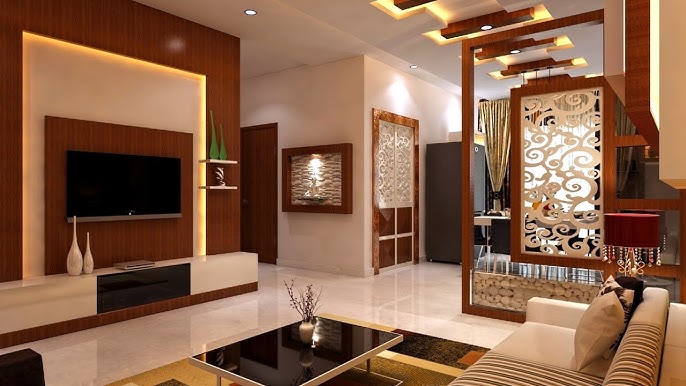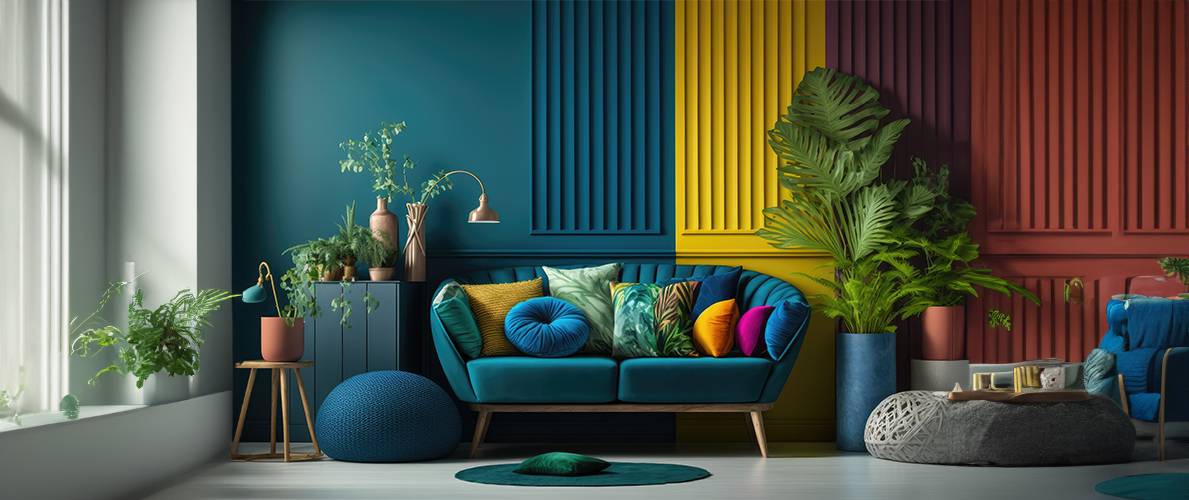Experience expert miami interior design for high-end home and office interiors.
Change Your Home With Vital Principles of Interior Decoration and Appearances
The art of transforming your home through the important concepts of interior layout and aesthetics calls for a thoughtful approach that harmonizes shade, balance, and spatial understanding. By comprehending the effect of color theory and the value of texture and patterns, one can develop rooms that are not just aesthetically enticing yet also deeply personal. Accomplishing this balance involves greater than mere decor; it includes a critical arrangement and an eager understanding of exactly how each aspect communicates within an area. As we check out these foundational ideas, think about exactly how they may redefine your understanding of home and individual expression.
Understanding Shade Concept
Recognizing the concepts of shade concept permits designers to create areas that reverberate mentally with residents while meeting practical requirements. Each classification plays a vital duty in developing consistency within a room.
The emotional impact of shades is profound; cozy hues such as reds and oranges stimulate energy and heat, while amazing tones like blues and greens advertise calmness and tranquility. In addition, using complementary colors improves aesthetic interest, producing striking contrasts that can raise a room's charm.
Neutral shades, on the other hand, function as a flexible background, allowing other style aspects to shine. It is vital to consider aspects such as lighting and the space's objective when picking a color palette, as these can change the assumption of shades throughout the day.
Eventually, a well-considered color design can transform an area, cultivating a feeling of comfort and style that straightens with the inhabitants' choices. Proficiency of shade theory is, for that reason, an important skill for any type of indoor designer aiming to develop harmonious and welcoming atmospheres.
Attaining Balance in Style
How can designers accomplish a feeling of equilibrium in their areas? Achieving equilibrium in style is basic to developing harmonious interiors. Designers can utilize 3 key sorts of balance: in proportion, unbalanced, and radial. Balanced equilibrium entails preparing elements equally around a central point, fostering a sense of order and serenity. This kind typically features sets of furnishings or artwork, enhancing aesthetic security.
Unbalanced equilibrium, on the other hand, relies upon varying components that still accomplish a cohesive appearance. This approach permits for even more dynamic and casual arrangements, supplying interest while maintaining stability. By thoroughly selecting varying sizes, shades, and structures, developers can develop an aesthetically compelling room that feels well balanced yet energised.
Radial equilibrium emphasizes a central centerpiece with elements radiating outward. This style is commonly seen in round designs, where furniture and decor produce a natural border that draws the eye inward.
Eventually, attaining equilibrium requires thoughtful consideration of scale, percentage, and the partnerships between aspects. miami interior design. read this By skillfully applying these equilibrium concepts, developers can change spaces right into environments that feel both visually pleasing and functionally harmonious, improving the general experience for passengers
Value of Spatial Recognition

An eager feeling of spatial recognition allows designers to identify prime focus within a space, assisting the visitor's focus to key features while maintaining a general feeling of unity. It additionally assists in the strategic placement of lighting, which can dramatically influence the understanding of area and mood. Additionally, comprehending spatial connections makes it possible for the designer to satisfy the specific demands of citizens, making certain that each location offers Read More Here its designated function without jeopardizing appearances.
Inevitably, spatial understanding is essential for taking full advantage of the potential of any indoor space. By meticulously taking into consideration the interplay in between measurements, layout, and function, developers can produce atmospheres that not only fulfill useful demands yet additionally evoke a feeling of comfort and elegance, improving the total living experience.
Integrating Texture and Patterns
Welcoming a diverse array of structures and patterns can significantly improve the visual and responsive appeal of an interior room. The calculated use different products-- such as timber, steel, fabric, and rock-- creates deepness and interest, making an area feel extra inviting and vibrant. Integrating smooth surface areas with rough appearances can establish a balance that attracts the eye and involves the senses.
When integrating patterns, consider both range and repetition. Large patterns can act as focal factors, while smaller, subtle styles can complement other components without frustrating the space. Layering patterns, such as pairing floral pillows with candy striped throws, includes intricacy and a feeling of harmony if performed attentively.
It is also essential to maintain a cohesive shade scheme, ensuring that appearances and patterns work together instead than complete for focus. By choosing a few essential textures and patterns, you can produce a combined aesthetic that mirrors your individual style while enhancing the overall setting of the space. Ultimately, the mindful unification of these components can transform a mundane room right into a sophisticated environment abundant with character and warmth.
Individualizing Your Area
Creating an area that shows your personality is essential to attaining a really inviting setting. Personalization in interior decoration enables you to infuse your one-of-a-kind design and interests right into your home, changing it from a simple shelter right into a refuge that talks to that you are. Begin by choosing a shade scheme that reverberates with your feelings-- bold hues can stimulate, while soft tones offer tranquility.
Include art work and decoration that show your passions, whether it be traveling, nature, or abstract concepts. Presenting personal collections, such as publications, photographs, or mementos, can evoke cherished memories and produce centerpieces within a space. In addition, think about tailoring functional pieces, like upholstered furnishings, to straighten with your aesthetic choices.

Verdict
To conclude, the improvement of a home via the important principles of indoor layout and aesthetic appeal demands a comprehensive understanding of color concept, equilibrium, spatial understanding, appearance, and personalization. Each element contributes substantially to developing a harmonious and functional living setting - miami interior design. By attentively incorporating these concepts, individuals can enhance the visual appeal and emotional resonance of their spaces, eventually promoting a home that shows special identifications while supplying convenience and usefulness